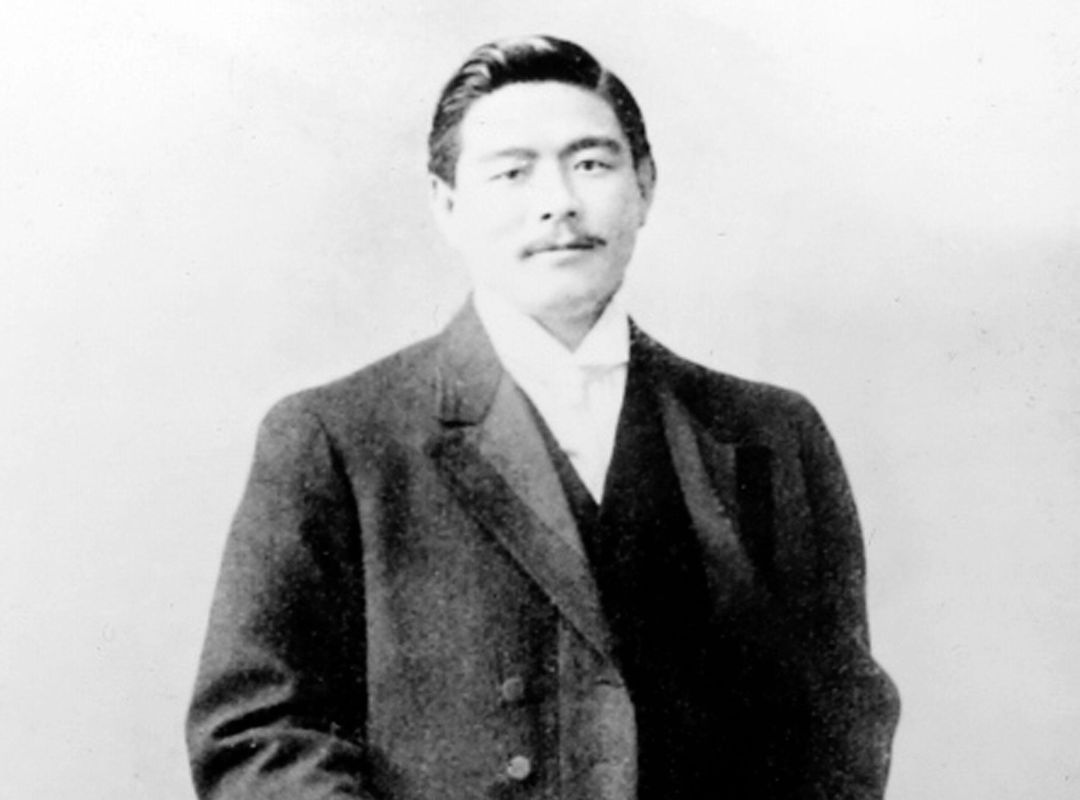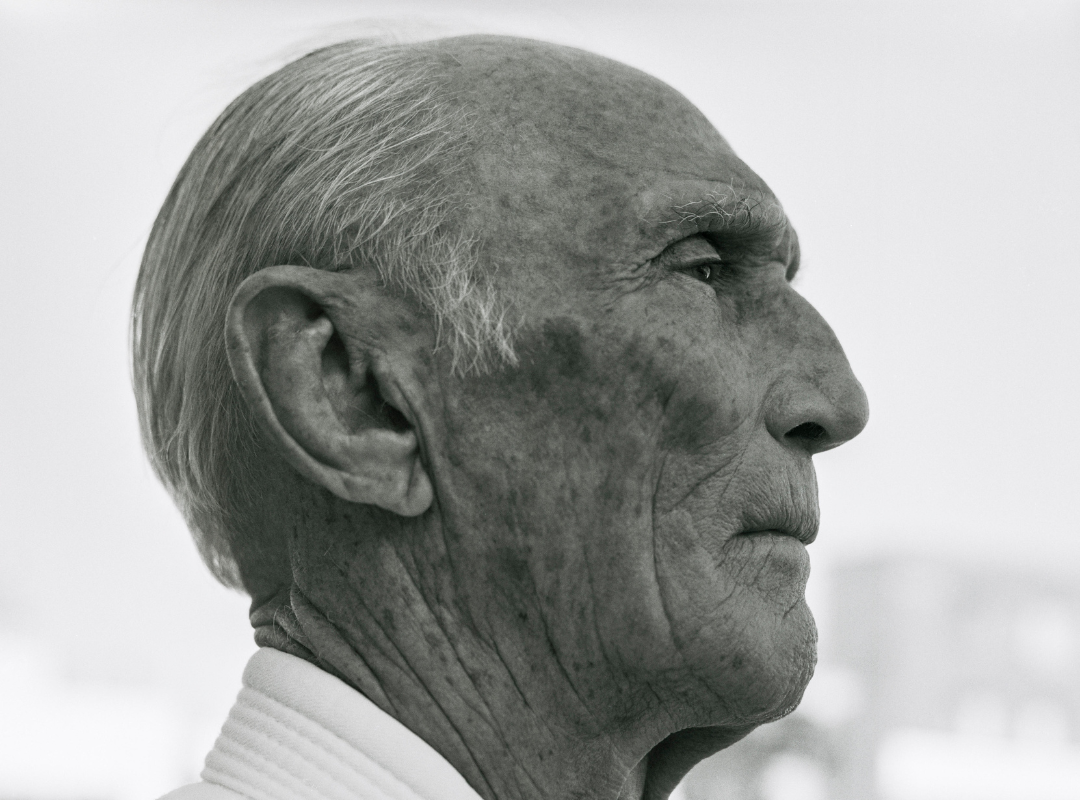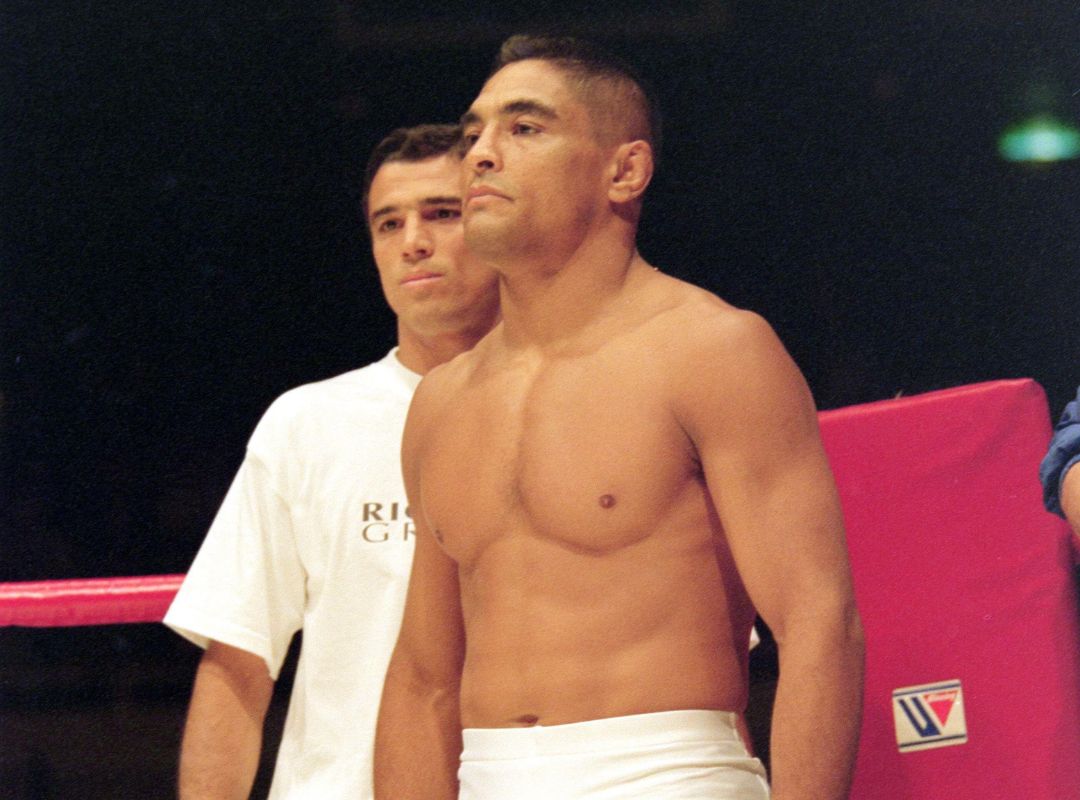
Childhood and first experiences with martial arts
Mitsuyo Maeda was born on November 18, 1878 in the city of Aomori in the north of the Japanese island of Honshu, a region known for its cold winters. The prefecture was plagued by poverty in the late 19th century, and many people moved to Tokyo to escape the cold and poverty. Maeda lived in his birthplace until 1886, when he moved to the Japanese capital and attended a traditional school run by the local elite. As a teenager, Maeda initially trained sumo under his father with fascination, which is why he won many brawls against his classmates and became known as the Sumo Kid. Later, however, he found that his stature was not ideally suited to this martial art. In 1894, Maeda’s parents sent him to study at a first-class teaching institute, now Waseda University. It was here that he first came into contact with the classical techniques of Jiu Jitsu taught at the university.
The way to become a judo master
Due to the growing popularity and dominance of Kodokan Judo, Maeda became aware of the fighting style taught by Jigoro Kano. The martial art combined effective techniques of ancient Jiu Jitsu traditions. Maeda began training in the best martial arts center in Japan directly under the master. During his martial arts training, the latter had learned to modify techniques from various ancient styles of jiu jitsu, integrating them into one martial art and thus creating the foundation stone of today’s judo. In the beginning, however, the fighting style taught by Jigoro Kano was considered a branch of Jiu Jitsu and not a martial art in its own right.
Mitsuyo Maeda was one of Kano’s first students and quickly established himself as one of the best representatives of the Kodokan school. During the early days of judo, competitions were held every month at Jigoro Kano’s school to prove the effectiveness and superiority of his martial art. Maeda himself participated in these events and trained hard for them. On December 25, 1898, in an amazing performance as a white belt, Maeda managed to defeat five opponents without any effort, which is why he received the purple belt from his master right after the competition. On the same day he managed to defeat more opponents.
Through his discipline, Maeda developed into an excellent competitor who quickly earned his black belt. With a height of 1.64 meters and a weight of 64 kilograms, his stature was average and not particularly imposing. However, he was considered to be an unusually good martial artist who could not only demonstrate the techniques, but also prove their effectiveness time and again in a real situation of self-defense or a fight. Maeda did not shy away from any challenge and often let himself be challenged by people on the street, whom he usually defeated quickly. Through his determined training, Maeda continued to develop as a judoka and was eventually promoted to judo champion of Gakushuin and Waseda Universities in Tokyo in 1901.
The spread of the techniques of the original Jiu Jitsu and Judo
In the following years, Maeda, as one of the best students, together with some other fighters of Jigoro Kano, was given the task of spreading the martial art. From 1904, together with his assigned master Tsunejiro Tomita, he traveled around the world and participated in events in arenas and circuses to present the martial art and its effectiveness to the public. Similar to Maeda, Tomita did not have a particularly imposing appearance, which illustrated the effectiveness of jiu jitsu and judo during the demonstrations. Maeda’s travels included visits to the United States, Spain, England, and Brazil. In the U.S., then-President Theodore Roosevelt was a great fan of Japanese culture and already an avid student of Jiu Jitsu of the ancient tradition under Master Yamashita. Especially among military personnel, the older form of Jiu Jitsu was well known. Maeda therefore visited some military training centers to demonstrate Judo and its effectiveness. Task holds were already part of ground fighting at that time, allowing him to defeat numerous good wrestlers on the ground. In addition, Maeda began a tradition of publicly challenging well-known world boxing champions, which was later continued by the Gracies.
Maeda participated in numerous prize fights. He often faced a physically superior opponent from another discipline, especially wrestling or boxing. His fighting style was exceptional, he usually took the fight directly to the ground and dominated his opponents there. In total, Maeda is said to have fought several hundred fights, most of which he won. Together with Satake Soshihiro, Maeda made an extremely great contribution to spreading the martial art of judo worldwide and especially in Brazil.
The birth of Gracie Jiu Jitsu
On his trip to Brazil in 1914/15, Maeda first visited the cities of Belém and Manaus, located in the north. Some time later, he decided to live in Brazil, naturalized and changed his name to Otávio Maeda. He also supported a government project to establish a colony of Japanese emigrants in northern Brazil. Along the way, he met a local politician named Gastao Gracie, with whom he established a friendly relationship. Gastao was the father of Carlos, Hélio and other Gracies who played a crucial role in the foundation and development of Brazilian Jiu Jitsu.
Gastao asked Maeda to teach his eldest son Jiu Jitsu. Maeda then took Carlos under his wing and taught the previously troubled teenager the techniques and philosophy of the martial art. In addition to discipline, Carlos learned the different phases of a fight from striking techniques while standing and throwing to ground fighting. Carlos later taught Jiu Jitsu to his brothers and over time developed the techniques learned as well as training forms with them, creating their own style. Gracie Jiu Jitsu placed great emphasis on the aspect of self-defense, and a few decades later the sport of BJJ was finally born.
The techniques were adapted so that regardless of the stature of the student, the physically inferior could regularly defeat much stronger opponents by technique and without much effort. In the early days of the Ultimate Fighting Championship, the fighting style Brazilian Jiu Jitsu, which was represented by Royce Gracie, a son of Helio, proved to be particularly effective in direct comparison with other fighting styles in front of a large audience.
Judo und Jiu Jitsu in Brasilien
The origins and history of Jiu Jitsu and Judo in Brazil can be traced mainly to Maeda. Besides Gracie, Maeda also taught other students such as Luis Franca, who later opened their own schools and spread the martial arts of Jiu Jitsu and Judo. At the beginning of the 20th century there was a wave of immigration of Japanese to Brazil, which is why other Japanese Jiu Jitsu masters settled in Brazil and taught their form of Jiu Jitsu. Well-known names of instructors besides Maeda were Takeo Iano, who opened a martial arts school in northern Brazil, and Kazuo Yoshida, who established a school in Bahia.
In 1921, Maeda opened his first official academy in Belém, which was located in the local rowing club. At that time, he taught techniques designed primarily for self-defense. The martial arts school trained several successful fighters in the region and after Maeda’s time was passed on to two of his best students, Sebastião Oli and Nakasan.
Mitsuyo Maeda’s Legacy
On November 28, 1941, Maeda passed away at the age of 63 and was buried in the Santa Isabel Cemetery in Belém. After his death, in recognition of his work with the dissemination of the techniques and philosophies of Judo and Jiu Jitsu as a pioneer athlete, he was awarded the 7th Dan by the Kodokan Institute in Japan.
Maeda left behind a large community of Japanese immigrants and Brazilian friends who were passionate about the martial arts and continued his work in Brazil and the world. He influenced the lives of many people during his time and played a crucial role in the birth of Judo and Brazilian Jiu Jitsu. Thanks to pioneers like Maeda, the fighting styles are now known and loved all over the world.




